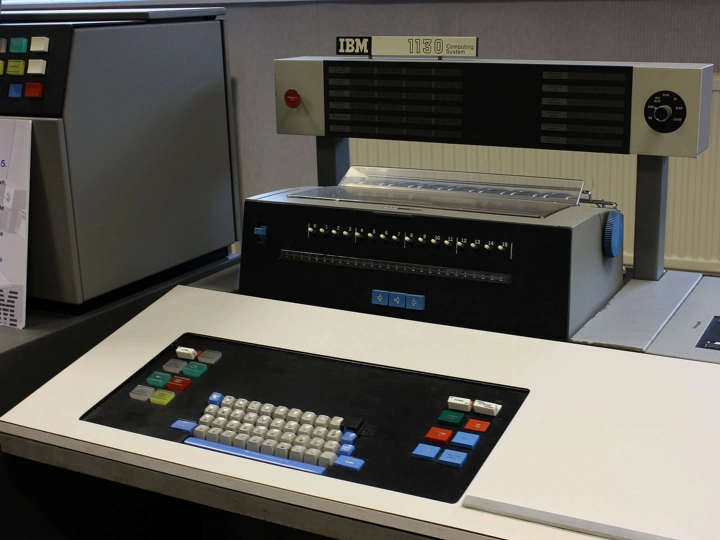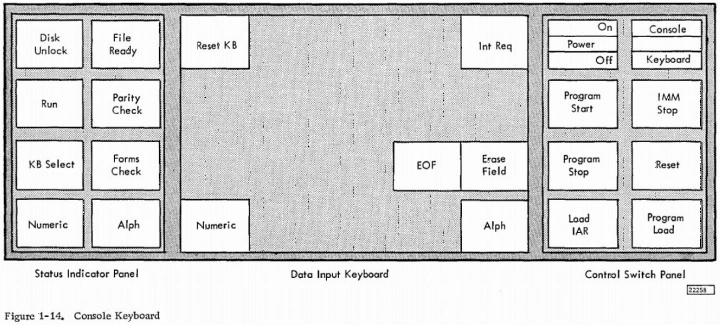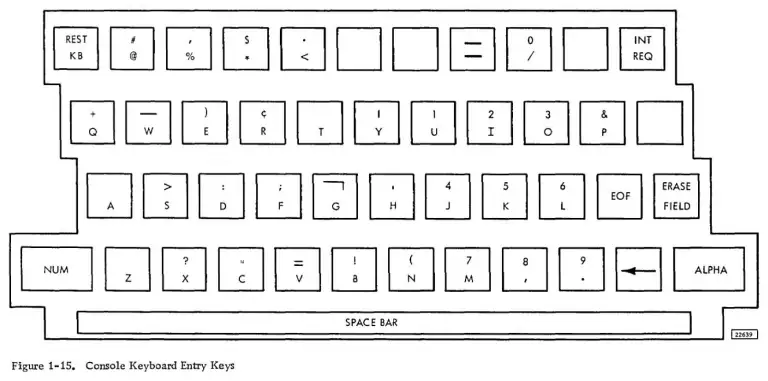IBM 1130 Computing System Console Keyboard
- Updated
Contents
Background

The IBM 1130 Computing System was a low-cost computer used for price-sensitive computing-intensive technical markets like education and engineering and was first announced on 11th February 1965. The base system comes in the form of a desk-like setup containing an IBM 1131 central processing unit. For input and output, the base 1130 would have the titular console keyboard, a paper tape reader and punch, and an IBM 1053 Console Printer that uses a Selectric-based printing system[%ibm1130.org%]. The console keyboard was used for entering data and instructions into the system's core storage, whose capacity was 4096 words for the base module (which could be expanded considerably with add-ons)[2].
| OEM(s) | IBM |
| Family | Typewriter printer-keyboard |
| Switches | IBM 024/026 based Keyboard Permutation Unit |
| Keycaps | Double or triple shot SAN |
| Layout | 45-key |
| Connectivity | 16-bit EBCDIC Card Code: keyboard module connects to host via Standard Modular System interface |
Design
The IBM 1130 Console Keyboard consists of three components; a status indicator panel, a data input keyboard and a control switch panel.

Data input keyboard
The keyboard itself is based on the IBM 029 keypunch keyboard. Unlike IBM's printer-keyboards of the period that may or may not also be keypunch based, the keyboard is not directly connected to the IBM 1130's printer, thus console keyboard entries are not printed automatically unless the IBM 1131 CPU is specifically programmed to do so. The maximum input speed of the keyboard is 20 characters per second and the keys output characters in 16-bit words in IBM Card Code standard.

Status indicator panel
The status indicator panel sports 8 lamps that are triggered when a certain condition is met. The following indicators are related to keyboard input:
- Keyboard Select ("KB Select" in the first diagram): turns on when a programmed instruction requests input data from the keyboard.
- Numeric: turns on when the keyboard is in numeric shift. In this mode, the only characters that can be entered are the ones that appear as the top-aligned legends on the keycaps.
- Alphabet ("Alph" in the first diagram): turns on when the keyboard is in alphabetic shift. In this mode, the only characters that can be entered are the ones that appear as the bottom-aligned legends on the keycaps.
Control switch panel
The control switch panel sports 7 functional switches besides the power on/off switch. Of note is the Console/Keyboard switch that indicates the source of the console input data (either the keyboard itself or console entry switches) to the currently running program.
- Martin Skøtt - File:IBM 1130 concole.ms.jpg [accessed 2022-09-04]. License/note: CC BY-SA 2.0.
- The National Museum of Computing - IBM 1130 History [accessed 2022-09-06].
| Published | Comment |
|---|---|
| 25th June 2023 | Rename "Specifications" to "Summary" |
